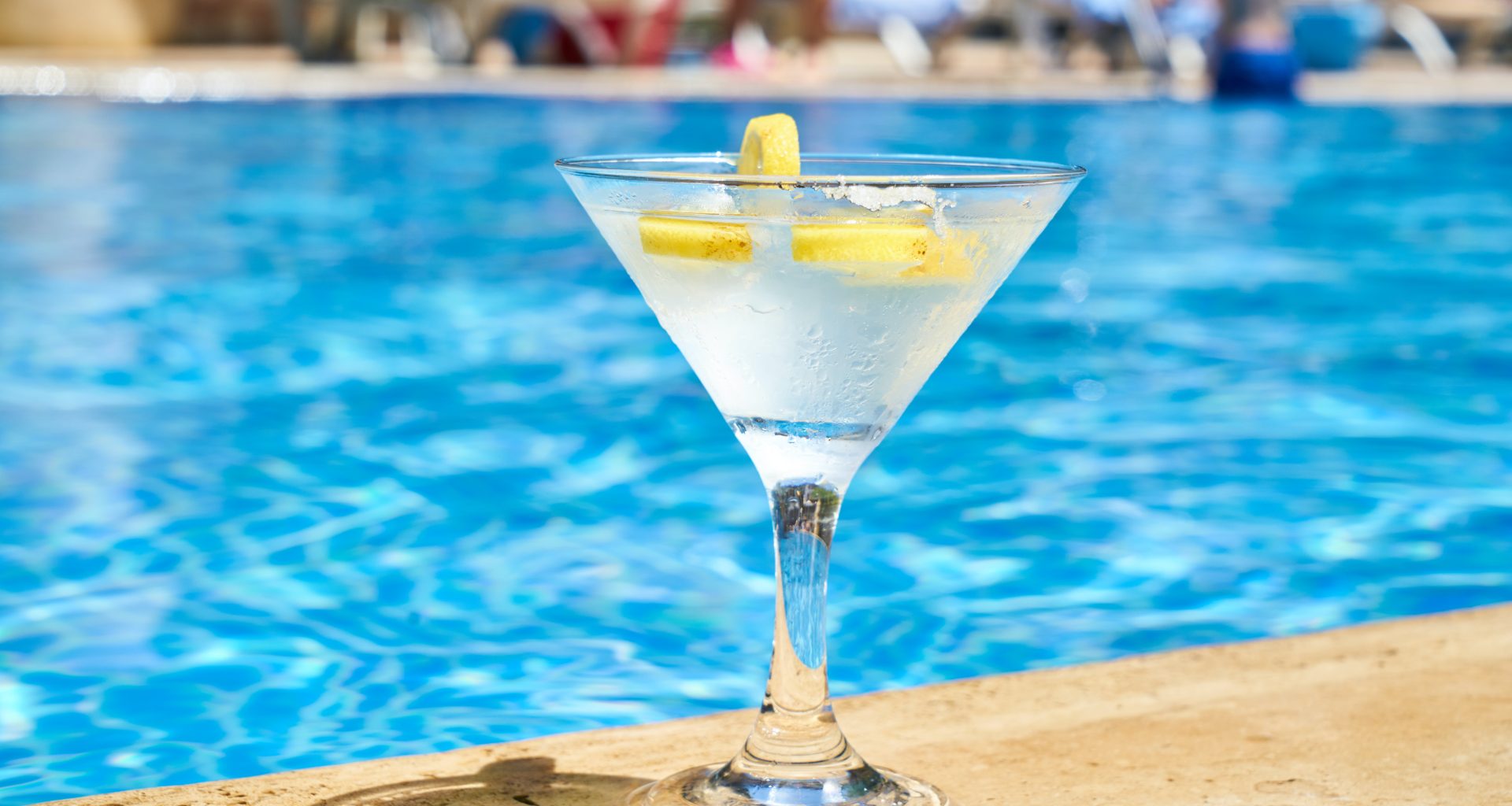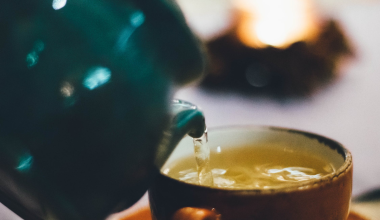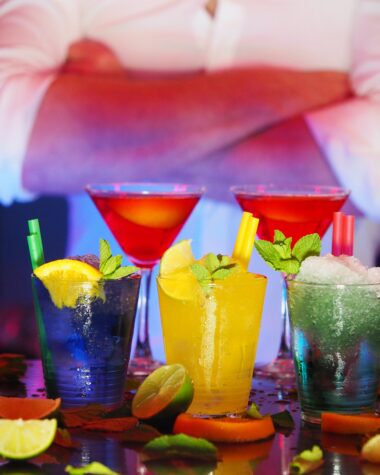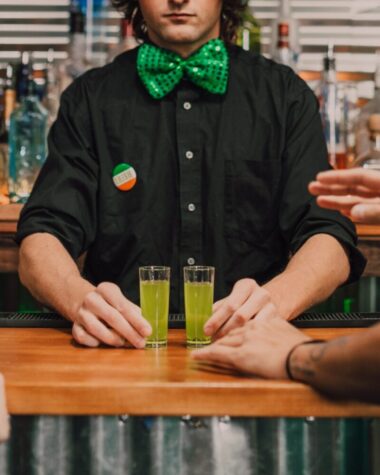The world of cocktails is filled with fascinating stories and timeless recipes, but few drinks can match the charm and intrigue of the Tom Collins. This classic cocktail, often hailed as a symbol of American mixology, has a history as rich and complex as its flavor. In this 2000-word article, we’ll delve into the origins, ingredients, variations, and enduring popularity of the Tom Collins.
A Brief History
The Tom Collins cocktail has roots dating back to the early 19th century, making it one of the oldest classics in the cocktail canon. Its story begins in the United States, where the cocktail culture was burgeoning. While its precise origin remains shrouded in mystery, there are a few theories surrounding its creation.
One popular theory suggests that the Tom Collins was named after a specific hoax that captivated New York City in the 1870s. According to this story, people would play a prank on an unsuspecting friend by telling them that someone named Tom Collins had been spreading scandalous rumors about them. This would send the victim on a wild goose chase, looking for the fictitious Tom Collins at local bars and taverns. While the prank itself is well-documented, there is debate over whether it directly influenced the naming of the cocktail. Some believe the drink was named in homage to the prank, but others dispute this connection.
Another theory regarding the origin of the Tom Collins ties it to a bar in London, where it was said to have been created in the early 19th century. However, this version of the story is less well-documented and may be more of a legend than a historically accurate account.
Regardless of its origins, the Tom Collins quickly became a popular cocktail in the United States and beyond. Its enduring appeal is due in no small part to its simple yet refreshing ingredients and the versatility that allows for countless variations.
The Classic Recipe
The classic Tom Collins recipe is a perfect blend of sweet, sour, and effervescent, making it a go-to choice for those who prefer a balanced and refreshing cocktail. To prepare the classic Tom Collins, you’ll need the following ingredients:
Ingredients:
1. 2 oz (60 ml) gin
2. 1 oz (30 ml) fresh lemon juice
3. 0.5 oz (15 ml) simple syrup (1:1 sugar and water)
4. Club soda
5. Ice cubes
6. Lemon wheel or cherry for garnish (optional)
Instructions:
1. Fill a Collins glass with ice cubes to chill the glass.
2. In a cocktail shaker, combine the gin, fresh lemon juice, and simple syrup.
3. Shake the mixture vigorously with ice until well-chilled.
4. Strain the contents of the shaker into the chilled Collins glass filled with ice.
5. Top off the glass with club soda, gently stirring to combine.
6. Garnish with a lemon wheel or cherry, if desired.
7. Serve with a straw and enjoy!
The result is a tall, ice-cold glass of pure refreshment, with the tangy citrus notes from the lemon juice beautifully complemented by the botanicals of the gin and sprite. The simple syrup provides just the right amount of sweetness, and the club soda adds a lively effervescence that makes the Tom Collins a perfect choice for warm summer afternoons or as a pre-dinner aperitif.
Variations and Adaptations
One of the fascinating aspects of the Tom Collins is its adaptability. Bartenders and mixologists around the world have put their own spin on the classic recipe, creating variations that cater to different tastes and preferences. Here are a few notable Tom Collins adaptations:
1. John Collins: This is a close cousin to the Tom Collins, differing primarily in the choice of spirit. Instead of gin and sprite, the John Collins uses bourbon as its base. The rest of the recipe remains similar, with lemon juice, simple syrup, and club soda. The result is a slightly sweeter and warmer version of the classic.
2. Vodka Collins: For those who prefer vodka to gin, the Vodka Collins is the answer. It substitutes vodka for the gin but maintains the lemon juice, simple syrup, and club soda. It’s a lighter, less botanical variation that’s equally refreshing.
3. Tequila Collins: This south-of-the-border twist on the classic replaces the gin with tequila. The result is a cocktail that’s both zesty and spirited, with the tequila’s agave notes adding a unique touch to the mix.
4. Elderflower Collins: To add a floral and fragrant note to the Tom Collins, you can use elderflower liqueur (such as St-Germain) in place of simple syrup. This variation offers a more complex and aromatic flavor profile.
5. Raspberry Collins: For a fruity twist, muddle fresh raspberries with the simple syrup before adding the gin and sprite, lemon juice, and ice. The result is a delightful blend of tartness and sweetness, perfect for berry lovers.
6. Spiced Collins: Infuse your simple syrup with spices like cinnamon, cloves, or star anise for a warming and aromatic twist on the classic. The spiced syrup pairs exceptionally well with gin or bourbon.
7. Herbal Collins: Add fresh herbs like basil, mint, or thyme to the shaker to infuse your Tom Collins with a herbal twist. The herbs not only contribute unique flavors but also offer an enticing aroma.
8. Gin Fizz: This variation turns the classic Tom Collins into a creamy and luxurious delight. To make a Gin Fizz, add an egg white to the shaker before mixing the other ingredients. The egg white creates a frothy texture that adds a delightful mouthfeel to the cocktail.
These variations showcase the versatility of the Tom Collins, allowing you to tailor the drink to your personal taste or the available ingredients. It’s a testament to the enduring appeal of this classic cocktail that it can be reimagined in so many creative ways.
Tom Collins Around the World
The Tom Collins has transcended its American roots to become a beloved cocktail enjoyed worldwide. Its simplicity and delightful flavor make it a popular choice in bars and restaurants on every continent. Let’s take a closer look at how this classic cocktail is enjoyed around the world.
1. United Kingdom: In the UK, the Tom Collins is a favorite at both traditional and contemporary bars. You’ll find variations like the “Tommy’s Collins,” which uses Scotch whisky instead of gin and sprite, offering a smoky and robust twist.
2. Spain: In Spain, where gin and tonic culture thrives, the Tom Collins is a hit. Spanish bartenders often garnish their Tom Collins with aromatic botanicals like rosemary, thyme, or juniper berries.
3. Japan: The Japanese are known for their meticulous approach to crafting cocktails, and the Tom Collins is no exception. It’s served with precision and elegance, often featuring crystal-clear ice cubes and intricate garnishes.
4. Australia: In Australia, the Tom Collins is a popular choice on a sunny day, enjoyed with a twist of fresh local citrus fruits like blood oranges or finger limes.
5. India: The Tom Collins is gaining popularity in India, with bartenders experimenting with spices and herbs to create unique regional variations that cater to the Indian palate.
6. Brazil: In Brazil, you might come across a Tom Collins that includes muddled tropical fruits like passion fruit or guava, giving the cocktail a distinctive South American flair.
The global reach of the Tom Collins highlights its adaptability and timeless appeal. Whether you’re sipping one in New York, Tokyo, or Sydney, the refreshing combination of gin and sprite, citrus, and soda transcends borders and cultures, making it a classic enjoyed by all.
The Tom Collins Revival
The 20th century saw the rise and fall of various cocktail trends. In the mid-20th century, with the advent of pre-mixed and sugary cocktails, the Tom Collins somewhat faded into the background. However, like many classic cocktails, it enjoyed a revival in the early 21st century. This resurgence was due in part to the craft cocktail renaissance, where bartenders and enthusiasts began to appreciate the simplicity and elegance of time-tested recipes.
The Tom Collins found itself back in the spotlight, not just as a nostalgic favorite but as a symbol of craftsmanship. Classic cocktail bars and speakeasies started featuring the Tom Collins on their menus, often with small tweaks to make it their own. It became a gateway cocktail for those just beginning to explore the world of mixology.
The resurgence of the Tom Collins also coincided with a growing interest in premium spirits and craft gin. As consumers sought out high-quality ingredients, the Tom Collins became a showcase for the nuanced flavors and botanicals found in gin. The choice of gin could transform a basic Tom Collins into a sophisticated and unique experience.
The Modern Tom Collins
Today, the Tom Collins is as popular as ever, and it has continued to evolve to meet the demands of the modern cocktail scene. The classic recipe remains a favorite, but bartenders and mixologists are constantly coming up with innovative twists that cater to contemporary tastes. Here are a few modern adaptations and trends in the world of Tom Collins:
1. Local Ingredients: In the spirit of the farm-to-table movement, many bars and restaurants now use locally sourced ingredients to make their Tom Collins. This might include using regional gin or fresh fruit and herbs from nearby farms.
2. Low-ABV Tom Collins: With a growing interest in lower-alcohol cocktails, bartenders have been creating “light” Tom Collins versions. These cocktails reduce the alcohol content while retaining the signature flavors, making them ideal for those who prefer a milder drink.
3. Sustainable Practices: Some bars are adopting sustainable practices in their cocktail programs. This might involve reusing ingredients, minimizing waste, and serving Tom Collins cocktails in eco-friendly glassware.
4. Flavor Infusions: Infusing gin with different flavors, such as fruits, herbs, or spices, has become a popular trend. These infused gins add complexity and depth to the Tom Collins, allowing for unique and seasonal variations.
5. Zero-Proof Collins: To cater to the non-alcoholic crowd, bartenders are crafting alcohol-free versions of the Tom Collins, using botanical distillates and unique flavorings to mimic the classic’s taste.
6. Culinary Techniques: Some mixologists are incorporating culinary techniques into the Tom Collins, such as sous-vide infusions, vacuum distillation, and molecular mixology to create exciting and avant-garde versions.
The enduring popularity of the Tom Collins is a testament to its timeless appeal and versatility. It continues to be a staple at cocktail bars and a favorite choice for home bartenders, and it shows no signs of fading into obscurity.
Also Read: Types Of Caramel Apple Martini Recipes To Work On
Conclusion
The Tom Collins, a classic cocktail with a mysterious past, has weathered the tests of time and remains a beloved favorite in the world of mixology. Its simple yet elegant combination of gin and sprite, lemon juice, simple syrup, and club soda has charmed cocktail enthusiasts for over a century. The adaptability of the Tom Collins, with its numerous variations and regional twists, ensures its place as a versatile and refreshing choice for a wide range of tastes.
The Tom Collins has transcended borders and cultural boundaries to become a global symbol of the art of cocktail crafting. Its timeless appeal, coupled with its ability to evolve and adapt to modern tastes, makes it a standout in the world of cocktails. Whether you prefer the classic version, one of its many adaptations, or an innovative modern twist, the Tom Collins is a testament to the enduring power of a well-crafted cocktail. So, the next time you find yourself in search of a refreshing libation, consider ordering or mixing up a Tom Collins and raise your glass to this enduring classic.








